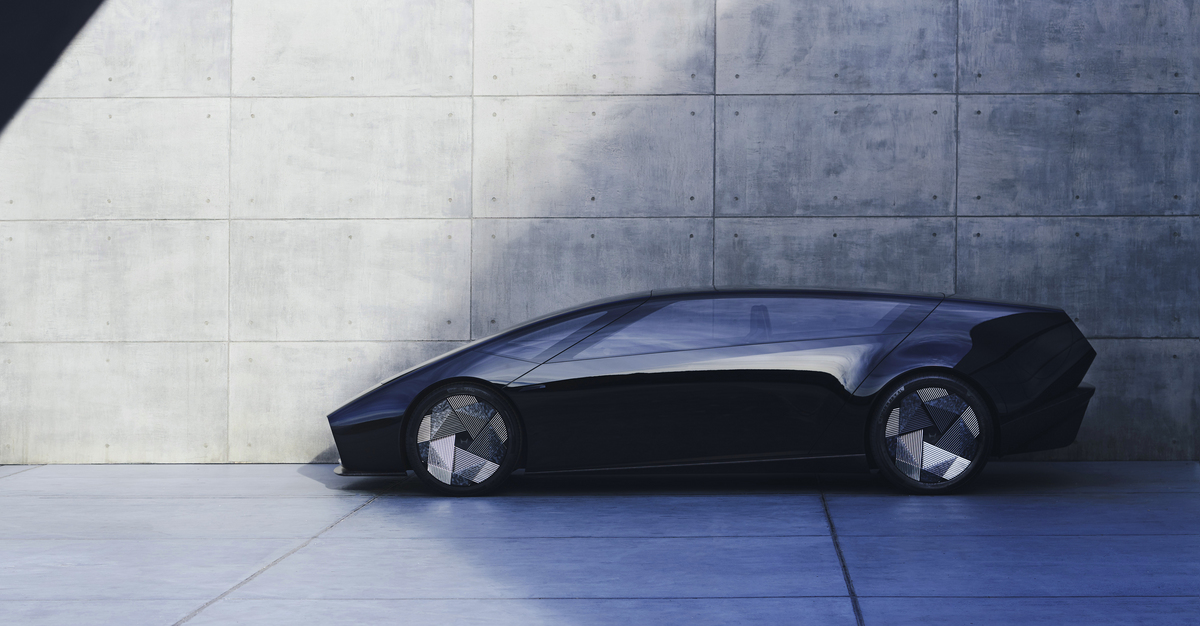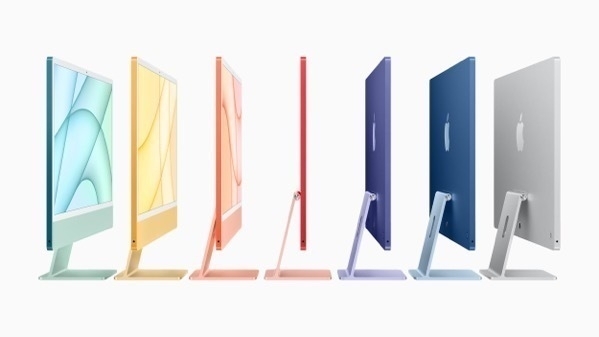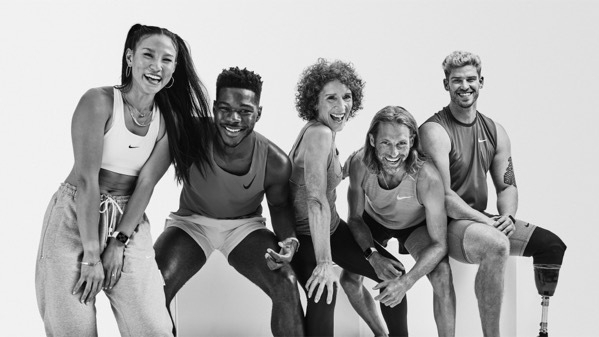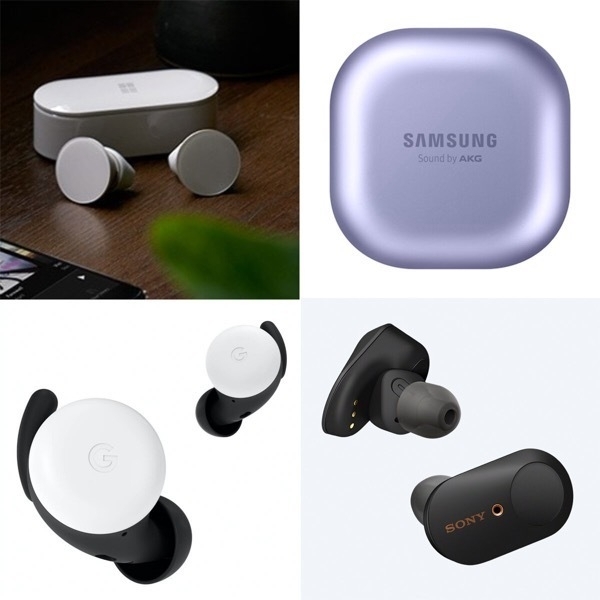Branding
-
Scout SUVs will be manufactured just north of my hometown – Columbia, South Carolina. ↩︎
- Dr. Pardun for supporting my bizarre little project, especially in the early days when the project was taking shape.
- All of the Ph.D. students in that content analysis class who helped me figure things out and took me under their wing.
- Dr. Mortensen for taking over as my thesis director and helping guide me through the publication process.
- Kevin Hull and Van Kornegay for serving on my committee and providing helpful feedback.
- Robert McKeever and Jacob Long for giving me an appropriate foundation for analyzing data.
- Editor Cleopatra Veloutsou who guided me through the process with the Journal of Product and Brand Management.
- All of the reviewers and discussants at the conference level for AEJMC and in the peer review process whose feedback legitimately made this paper better.
-
Everything doesn’t need a logo. In the 1990s, branding meant putting the logo on everything, but is it really necessary? (It isn’t.) Logos are important, but they aren’t the only way you communicate your identity. Apple’s using their logos smartly, and not over using their marks.
-
Differentiation happens with the design around the logo. Apple’s products are identified by their look and feel. Yes, the logo is part of that, but Apple’s visual branding extends far beyond just their logo. Their brand is expressed as much through the surrounding elements — type, color, materials — as it is through their logo. Their visual differentiation extends far beyond just their logo and their identity is stronger for it.
-
Think about how a visual identity can reflect a company’s values. Most of the time, visual identity reflects an organization’s structure, but connecting your visual brand to your corporate values is potentially more powerful. Apple uses logo variations that support their beliefs, not their hierarchy.
I missed that Lego released a refined visual identity a couple of weeks ago that includes a new typeface, Lego Typewell, based on brick proportions. I really like it. The best detail I’ve found on the typeface is on this review from BP&O.
Honda shows off EV concepts – and two new logos
A new look and branding for Honda EVs
Honda showed off two new EV concepts under the new Honda Zero brand at CES — the Saloon and the Space-Hub. Most of the coverage is focused on the futuristic looks of the concept cars. As someone who grew up going to the Chicago Auto Show and seeing the cars of the future, I’d temper any expectations that the final designs will be this radical.

But as a branding researcher, what caught my attention is that they also rolled out a new Honda “flying H” logo to be used on all new electric cars. From the official Honda press release:
The current Honda “H mark” has a long history, dating back to 1981. In launching the next-generation EVs, Honda designed a new H mark, to express the company’s determination to undergo a historic transformation as well as the ability to constantly pursue new challenges and advancements. This new design expression, which symbolizes two outstretched hands, represents Honda’s commitment to expand the possibilities of mobility and continue to meet the needs of its customers. The new H mark will be applied on future Honda EV models, including the Honda 0 Series.

The logo simplifies Honda’s current H, removing the outer bounding box and reshaping the mark. It does feel like a more modern mark and seems appropriate on the futuristic vehicles. As logo introductions go, this might be the slowest roll out in the history of visual branding since the first Honda Zero cars won’t be released until 2026. And since the logo is intended for just electric vehicles, that means that Honda is choosing to fragment their brand for a period of time.

It’s worth noting that the Honda Zero brand had its own mark at introduction. I’d be surprised if this is used in marketing when the models debut in 2026. I’m not sure what’s going on here, since the elements don’t really match anything.
Electric car branding is fascinating to me. VW and BMW add a letter or letters to the model number. Hyundai is using the Ioniq brand name for most, but not all of their EVs. Many vendors are rolling out EVs alongside their internal combustion engine lineup. VW is resurrecting the old Scout brand for a line of electric SUVs.1 But to my knowledge, Honda is the first company to create a version of their corporate logo especially for electric vehicles. As the transition to electric vehicles continues, it will be interesting to see how EV branding continues to shift and evolve.
Bob Wertz is a creative director, type designer, Ph.D. student and researcher living in Columbia, South Carolina.
How NASA Learned to Love the Worm Logo - The New York Times
Now the worm is back. And the meatball is still there too, still the official insignia for NASA.
Enjoyed this article about the two NASA logos. As designers, we typically preach consistency. But in this case, having two logos seems to work.
Barnes & Noble Undergoes a Back-to-Basics Redesign - The New York Times:
Mr. Daunt has demonstrated that consistency doesn’t rank very high on his priority list. New York City has nine Barnes & Noble stores featuring four different logos above the front doors.
Milestone: My first published research paper is now online
I’ve reached a big milestone in my academic career: my first published research paper.
Brand new: How visual context shapes initial response to logos and corporate visual identity systems has bene published in the Journal of Product and Brand Management. It’s available now online and will eventually be assigned to an issue. If you have access to journal articles through a university or public library, you can access the article.
If you can’t access the article, here’s the abstract:
When a new logo is released, it does not have an established meaning in the mind of the viewer. As logos have become more highly scrutinized by consumers and critics, it has become more important to understand viewers’ initial response to logos. While other studies have researched the impact of aesthetic choices on viewer reaction to logos, this study aims to understand the effect of the surrounding visual identity system when a new logo is introduced. This study combines a content analysis of 335 posts on the logo review website Brand New with the voting data from their polls to understand how visual context correlates with a viewer’s initial response. Increased amounts of visual context correlate to an improved response from viewers. Different types of context that can be presented – from logo variations and environmental examples to videos and animation – have varied effects.
Basically, my study finds that people respond better to new logos when they are shown more examples of the logo in use. This is one of those things that seems intuitive to designers, but hasn’t been researched or quantified. Because I’m a designer, most people are surprised that my research includes a fair amount of statistical analysis, but I’ve really taken to the quantitive side of things. This paper has been in review for over a year, working it’s way through the revision process.
It’s fitting that this is my first paper to be published. When I started grad school, I didn’t really know anything about scholarly research. In the spring of 2019 — my second semester as a grad student — I took a content analysis class with Carol Pardun. I was the only master’s level student in a class full of Ph.D. students. I felt so overwhelmed by the pressure to come up with an idea and learn methods and theories on the fly. The paper I wrote for that class was the first version of this paper. It was accepted to the AEJMC Conference that August and I presented in Toronto — my first academic conference presentation. I loved the concept for the study and got great feedback, but I was still learning and felt like I could improve it. I scrapped everything, started over with a larger sample and better methodology. After Dr. Pardun retired, I started working with Tara Mortensen on the next evolution of this work, which turned into my thesis. And that thesis eventually became this paper.
Thanks go out to so many people who’ve help me along the way:
And of course, this couldn’t have happened without the rest of Team Wertz. Liz and the kids have been so supportive and patient while I have embarked on this grad school journey. (And occasionally, Norah and Jill even joined me at Starbucks when I had to write.) I simply could not have done it without them.
I’ve still got a few years left until I finish my classwork and dissertation, but I’m exceptionally proud of this milestone and excited to see where my research goes next.
Bob Wertz is a creative director, type designer, Ph.D. student and researcher living in Columbia, South Carolina.
The Curious Case of the Missing Apple Logo
Two notable logo trends from Apple
This post was originally posted on April 22, 2021 on Sketchbook B. It’s reposted here as part of a project to move some of my favorite writing to my new site.
Apple has one of the most recognizable logos in the world. Which isn’t surprising because they are the largest company in the world. I’ve been watching a couple of trends over the last few months about how Apple uses their logos and this week, those trends have become even more apparent. For brand managers and designers, I think there is something interesting going on and it’s worth digging into the mystery.
The logo is “missing.”
Apple isn’t afraid to use their logos. All of their computers have prominent logos. They include logo stickers in all of their boxes. Apple’s logo is everywhere. But on their new iMac, which was released this week, Apple’s logo is on the back, but not on the front. The last few generations of iMac’s have featured a prominent logo on the back and a second logo on the “chin,” facing the user. The new iMac has no user facing logo.1

But the iMac isn’t the only recent Apple product with an interesting logo story. I first noticed Apple’s changing logo use with the introduction of the AirPod Max, which has no Apple logos at all on the product. There is plenty of room for a logo on the side of the headphones, but there is none to be found.

I guessed the AirPods Max was the only Apple product without a logo, but I was wrong. For some reason I assumed that my AirPods case had the Apple logo on it, but guess what? It doesn’t. I checked Apple’s website and the AirPods Pro don’t have a logo either. (Although according to Apple’s website and an iFixit teardown, the chip inside the AirPods Pro has a tiny logo printed on it.) My Apple Watch has a tiny Apple logo on the bottom on it, but it’s not visible when it’s being worn. Apple doesn’t include logos on any of their wearable products.2

But that’s not all. I’ve been trying out Apple Fitness+ and there are tons of visible logos. Nike logos. All of the instructors seem to be wearing Nike gear. There are no Apple logos. No special Apple Fitness+ shirts. No little Apple “watermark” in the corner of the screen. An Apple logo isn’t hidden somewhere on the set.

I checked Apple’s competitors. Amazon, Samsung and Microsoft all include their logo on the charging case for their AirPod competitors. Sony and Google even managed to get their logo on the earbud itself. None of the competing smartwatches that I looked at had logos, although Samsung etched “Galaxy Watch” into the crown for some reason.
In the fitness space, Peloton employees sport logo apparel while they lead classes. And the instructors on Nike’s fitness apps obviously sport Nike gear.
So what’s going on? I’m not sure.
My first reaction is it’s just an issue of taste. Placing logos all over a product is tacky — especially for wearables. And Apple is showing their superior taste by acknowledging that consumers don’t always want to be sporting company logos. Maybe? But lots of premium and luxury brands include logos on their products. And Apple isn’t exactly shy about using their logo.
It’s not about the logo size. Even the Apple Pencil has a logo. And as I mentioned, the chips inside the AirPods have logos printed on them. (The chips… inside the case… that the consumer never sees…)
The absence of a logo is even stranger when you realize the original intent of a trademarked logo: to clearly identify the manufacturer. With a company like Apple, whose designs are ripped off more than about any other tech company, their logo is the part of the design that absolutely can’t be legally copied.
My best guess is that Apple thinks that their product designs are unique enough, that they don’t even need a logo. People will know AirPods are an Apple product when they see them. The Apple Fitness+ workouts feel like Apple even if their logo isn’t present. I don’t think any other company can make a desktop computer that looks like the new iMac. Apple’s presence is understood because of the overall production quality and design. A logo isn’t necessary.
The logo is “incognito.”
Typical corporate logo standards are incredibly strict. Apple doesn’t publish their internal brand guidelines, but it’s clear they do allow some more playful uses of their mark. For example, they often use illustrated versions of their logo to promote their media events, like they did for this week’s Spring Forward event. Allowing logo variations in large corporate identity systems isn’t uncommon, but those variations are typically used for structural identifications between organizational divisions or product lines.
But Apple is using logo variants that align with their values.

In 2014, Apple started using a logo with a green leaf in their retail stores on Earth Day. This logo seems to be used mostly in Apple retail, but showed up this week on the Apple home page for Earth Day 2021 and their updated environmental statement.

And in this week’s presentation, they showed their privacy Apple variation, which is often animated and turns the leaf at the top of their logo into a lock. It’s used in ads, videos and sites when Apple is talking about their commitment to privacy. What’s smart about this approach is that Apple is using their logo to not just communicate their identity, but also their corporate values.
(It’s worth noting that there are a couple of other logo variants as well: a gift that is used during the holidays and a version for their Marina Bay Sands retail store in Singapore. And I’m sure there are others as well.)
What lessons can we take from Apple’s approach to logo management?
Apple’s visual branding is clearly effective. Repetition and consistency are the foundation of contemporary brand management, but Apple has decided to not use their logo in some places and change it in others. This ongoing shift in logo usage isn’t accidental or ill-considered. A couple of lessons to think about:
We’ll never hear from their branding team and Apple doesn’t publicly share their logo and branding guidelines. We’ll just have to watch as they rollout ads, events and products. But it’s clear that Apple is diverging from the standard brand playbook here and I think we should pay attention to where they go next.
Bob Wertz is a creative director, type designer, Ph.D. student and researcher living in Columbia, South Carolina. He’s been blogging since 2008.